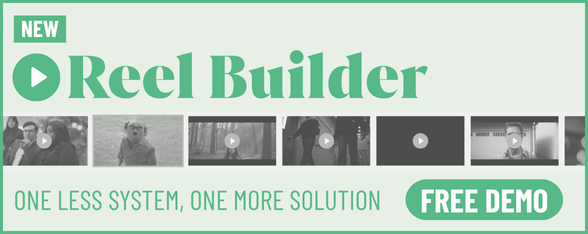
Crafting Stories That Make You Feel

Ken Conrad has spent his career earning a reputation as a trusted collaborator to directors from idea to delivery. He has worked with brands such as Whisker, PPG, Salesforce, AbbVie, USAF, Chevron and Publix. With a background as a film editor, his strengths are in narrative-driven storytelling.
LBB> The first cut is the deepest: how do you like to start an editing project?
Ken> With the most important thing: An organised file folder template and project template. Knowing where to put everything every time removes having to think “where is that?” from your file system and project.
LBB> Non-editors often think of editing just in technical terms but it's integral to the emotion and mood of a film. How did you develop that side of your craft?
Ken> I do not think it is just any one thing. Go to therapy. Read books on psychology. Watch films that move you and rewatch them until you understand how they get you to feel that way. Remember that people often watch in public spaces. And then of course, make things and try to make others feel what you want them to feel.
LBB> How important is an understanding of story and the mechanics of story?
Ken> ‘Story: Style, Structure, Substance, and the Principles of Screenwriting’ by Robert McKee is one of the first books I read after I started editing. Even though it is about writing a script, it was a great help in helping me learn how to sometimes craft a new story in the edit.
LBB> Rhythm and a sense of musicality seem to be intrinsic to good editing (even when it's a film without actual music) – how do you think about the rhythm side of editing, how do you feel out the beats of a scene or a spot? And do you like to cut to music?
Ken> For film or television I never cut to music unless it is a montage. I try to let the scenes and the actors dictate some of that rhythm, and then I add in how I feel it should flow on top of it all. I then recut it until it just feels right.
For commercial work I usually always want some type of track there, even if it is just temp, but it greatly depends on the spot.
LBB> Tell us about a recent editing project that involved some interesting creative challenges.
Ken> I think whenever you are interacting with people you will have creative challenges and that is a good thing. It is what makes a project better, what makes you better, and hopefully also elevates those that see it.
LBB> In the US we know that editors are much more heavily involved across the post production process than in Europe – what's your favourite part of that side of the job?
Ken> Telling stories, making people feel things, and solving the puzzle that is set before me.
LBB> What's harder to cut around – too much material or not enough? (And why?)
Ken> I guess that greatly depends on your director, DP, and actors. Every project is different. I am always wanting options and different takes, but if everyone is doing great things you don’t need a lot of footage.
LBB> Which commercial projects are you proudest of and why?
Ken> I have really enjoyed the ‘Litter Robot’ spots we have worked on. They are fun, humorous and colourful.
LBB> There are so many different platforms for film content now, and even in advertising something can last anything from a few seconds to a couple of hours. As an editor, are you seeing a change in the kind of projects you're getting from brands and agencies?
Ken> I have not seen many changes recently. We usually deliver for all formats now. Both long and short-form.
LBB> Who are your editing heroes and why? What films or spots epitomise good editing for you?
Ken> Mark Day, Joe Alves, Ray Lovejoy, and Terry Rawlings. They all have created films that I love.
LBB> How does editing in the commercial world differ from the film world and TV world?
Ken> I would say the biggest difference is what kind of stories we tell. In commercial work we are trying to motivate people to buy something, know about something or change their opinion about something. With film and TV we are usually trying to entertain and say something about being humans.
LBB> Have you noticed any trends or changes in commercial editing over recent years?
Ken> I am not sure how much that has changed at the heart of it. Almost everything is some form of making you feel like you would be missing out on something if you don’t do the thing, buy the thing, use the thing we are talking about.















